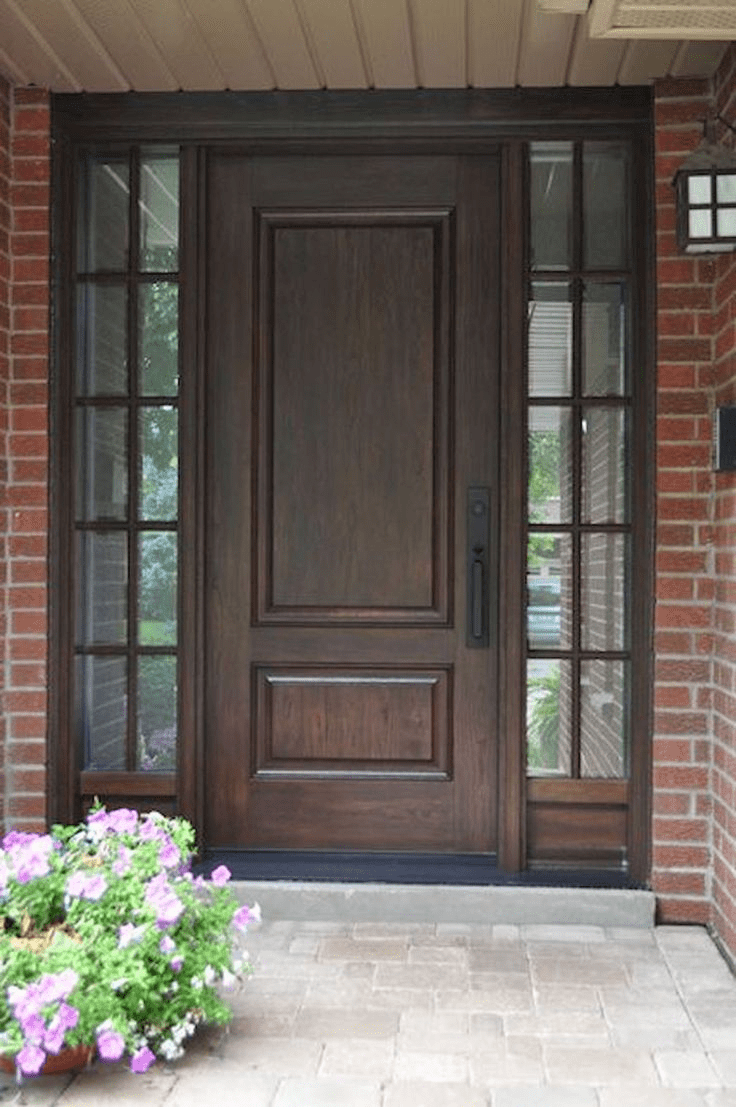Most homeowners use the designs of entry doors as a way of presenting their style and preferences. It is important to note that the front doors serve as the major entryways into your home. For this reason, while installing a door, you should consider the aspect of the image it creates about your home before someone gets to the inside.

You should choose an entry door that improves the general home appeal because the location of these doors draws much attention. Like any other thing, exterior doors have advantages and disadvantages. Below are some common pros and cons for different styles.
1. The Traditional Doors
They are also known as classic-style doors. These door designs are timeless as they have been used for a long time and can be used for different homes.
Some homeowners judge the functionality of these doors based on the naming of traditional doors. The truth is that they can be beautifully customized to the design of choice and are not boring at all.
The traditional entry doors are designed with several raised door panels. The number of these panels and how they are maintained on the doors is dependent on the nature of the door design used.
In most cases, the traditional doors are made of wood material. However, in some cases, you can find metal and fiberglass traditional doors in the market.
Another advantage of traditional doors is that they can be inserted with glass panels that let more natural light into the house. The glass can be inserted at any corner of the door you like, but in most cases, they are configured at the top.
The most common disadvantage of traditional doors is that they are not the best when it comes to the levels of security. Configuration of the glass panels onto the doors is considered a security threat because the glass can easily be broken.
2. Craftsmen Doors
These exterior doors are mostly used by homeowners who own bungalows and cottages. The doors are made of a simple design, making them look uniquely beautiful.
The craftsmen’s doors feature glass panels, mostly occupying a third of the door. The doors are designed with a simple trim to separate the inserted panels from the lower part of the door.
The glass panels are usually very narrow with these door types, making them less of a security threat.
On the negative side, the doors are manufactured with wood material prone to damage when exposed to harsh weather conditions.
3. The Modern Doors
They are also known as contemporary doors. The lines featured in the modern entry doors are minimal, making it very simple.
The modern doors feature horizontal glass panels, which are different from the craftsmen doors’ counterparts.
With modern door styles, the glass panels can be inserted in any design the homeowner wants to let in as much natural light as possible.
Like in other door types, the glass panels are a security threat, especially if the glass panels are located near the door lock.
4. Dutch Doors
The Dutch entry doors are the best option if you are looking for a balance between old-world charm and stress on innovation.
One advantage of the Dutch doors is that although they look like ordinary doors when closed, they can split horizontally right in the middle.
The splitting allows the door’s top part to open while the lower part is closed. This feature gives an opportunity only to open the upper part to allow more natural light in.
If you have pets and small kids that you want to keep from wandering outside, at the same time, allow the maximum amount of sunlight to the inside.
The splitting also helps with security features since you can only open the upper part to confirm the person knocking at the door before you completely open the entire door to let the door in.
The disadvantage with the Dutch doors is that they are relatively expensive compared to other entry doors counterparts. The Dutch exterior doors also require extra hardware to function effectively.
